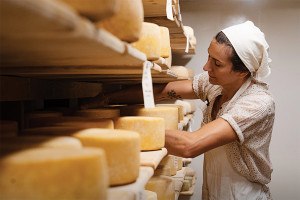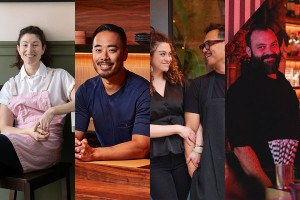The Gastronaut: It Gets Better
I was at Aldine for dinner on opening night, and it was awful.
Of all the dishes set before me, I only found two of them appetizing enough to finish, and with another one, I had to pull the old Oh look, some of it fell on the floor trick just to make it appear as though I’d taken more than one bite.
But it’s okay. Don’t worry. Aldine got better.
I ate at Sbraga years ago, shortly after it opened. It was one of the most talked-about restaurants in the city, but not all the talk was good. And, frankly, neither was dinner. It was gimmicky, too clever, muddled in a way that I think was supposed to feel casual and fun but didn’t.
But Sbraga got better, too.
Will was cold and clinical when it opened. Somewhere along the way, it grew a soul. Serpico was beautiful, but the food felt limited and alien early on—as though Peter Serpico was still cooking for vacationing eaterati aching for a hit of Momofuku South Street. But with each iteration of the menu, he seemed to focus in more on what made him excited, and today, I send anyone who’s coming to town looking for a taste of the city’s best his way.
Owing to the churn of talent, our review-on-opening-night culture, our snark, our jadedness, our fickle natures and love of schadenfreude, most restaurants never get the chance to improve—one bad meal, and people never go back. But while it may seem counterintuitive, this massive restaurant boom we’ve been experiencing for the past couple of years is actually giving restaurants more time to settle in and find themselves, not less.
True, a serious clunker of a restaurant will still wither quickly. Like Avance, they die young, victims of early jitters and failures of vision. Like Sophia’s, they are murdered for very real sins of taste and hubris and cheesesteak soup dumplings. The small, the stupid, the precious and the undercapitalized will fail the same way that restaurants always have.
But because there are currently so many restaurants doing so many good things, not everyone out there can get to every single new restaurant in its opening week anymore. Simply by dint of sheer numbers, we are, as a dining culture, falling back to the pre-Yelp days when a restaurant had two or three months to settle before the hordes passed judgment—time a restaurant sometimes needs to go from good to great.
Aldine is a great example of this. George Sabatino struggled early with finding the proper balance and tone on his menu. He struggled, it seemed, to find the fun. But what kept his growth even slower were the concurrent openings of five other new, eagerly anticipated restaurants, all of which had to share the same customer base hungry for something new.
So Aldine got better, the same way Sbraga and Serpico and Will got better. And today, Aldine is a strong and daring restaurant with an evolving menu and its legs firmly under it. Its survival owes a lot to Sabatino, but perhaps more to a scene that’s giving it the time it needs to grow into its promise of greatness.


